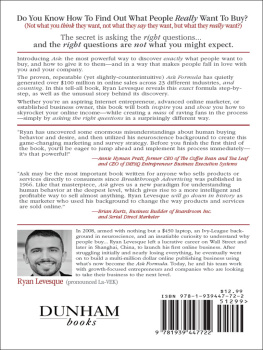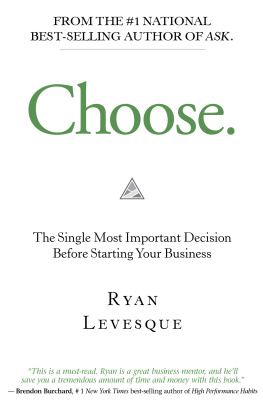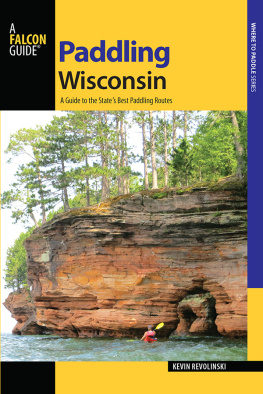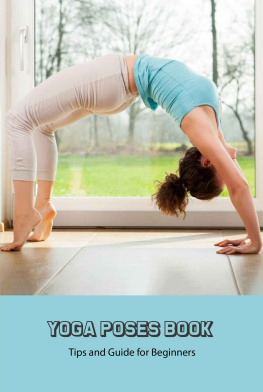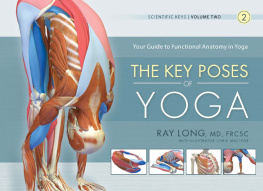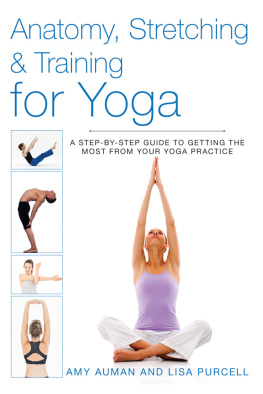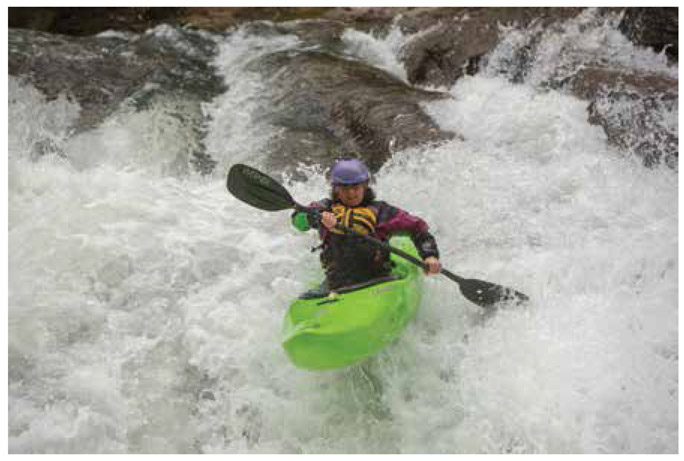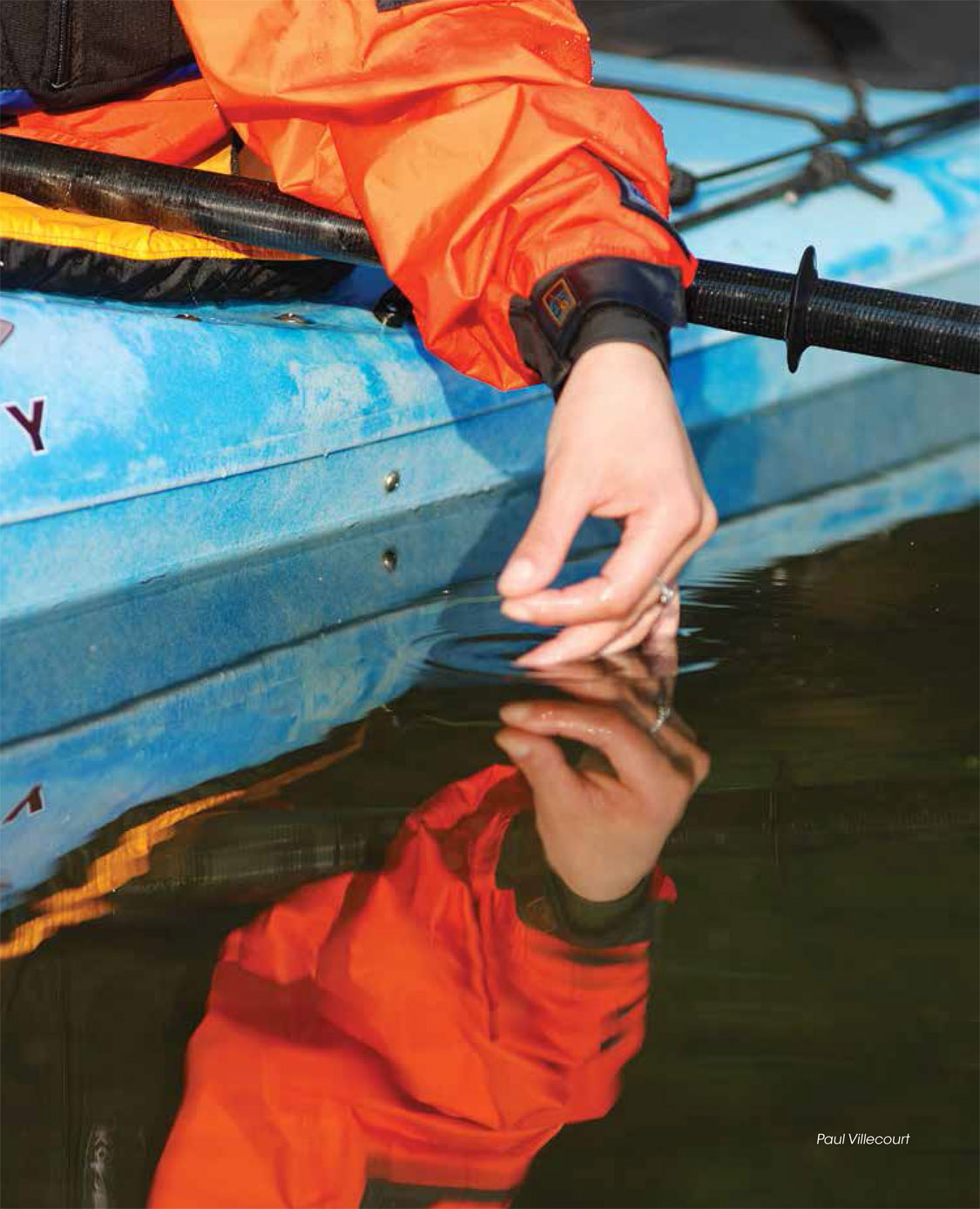ABOUT THE AUTHOR
Anna Levesque is a leading expert on kayak instruction for women and yoga for paddling. Named one of the most inspirational paddlers alive by Canoe & Kayak magazine, Annas twenty-plus years of experience as an accomplished international competitor and instructor has landed her in mainstream publications such as Time, Shape, and Self magazines.
She is the founder/director of www.watergirlsatplay.com and www.mindbodypaddle.com, and has taught thousands of paddlers worldwide. Anna has produced four instructional kayaking DVDs for women, a Yoga for Kayaking DVD, and short downloadable yoga for kayaking segments on Vimeo that have sold over 6,500 copies combined.
Anna is an American Canoe Association Whitewater Kayak and Stand-Up Paddleboard Instructor Trainer, and a SUP Yoga Endorser. She is also a certified Ayurveda Health Counselor and a 500 RYT with Yoga Alliance who coaches and supports clients in cultivating vitality, self-care, and healthy digestion through effective diet and lifestyle choices.
She is a brand ambassador for Dagger Kayaks, BIC SUP, Werner Paddles, Kokatat Watersports Wear, and Shred Ready Helmets.
She lives in Asheville, North Carolina, with her husband, Andrew, and their schnoodle, Ceiba.
Instagram: annaclevesque
Facebook: www.facebook.com/anna.levesque2
www.mindbodypaddle.com
www.watergirlsatplay.com
For more about photographer Scott Martin, visit his website: www.scottmartinimages.com.
ACKNOWLEDGMENTS
Id like to acknowledge my yoga and Ayurveda teachers, and their teachers, and their teachers, and so on, going back many generations. I have a lot of gratitude for Joe Taft and Deirdre Smith-Gilmer for being thoughtful, effective, and inspiring alignment-based yoga teachers. Theyve had a big impact on my practice and on my teaching. Id like to acknowledge Vishnu Das and Indu Arora for teaching me about the subtle aspects of yoga and helping me to dive deeper into Ayurveda, the science of life. Thank you, Dave Costello, for advocating for this book and to Katie Benoit and Meredith Dias for being great editors to work with. Im grateful for Libby Hinsley, a caring and effective yoga teacher, yoga therapist, and physical therapist whose input and time were key in this book coming together. I acknowledge Scott Martin for his dedication to his work and for photographing the lovely images contained in this book. Im thankful for the loving, supportive relationships in my life, both in the paddling community and in the yoga and Ayurvedic communities. Thanks to Justin at Tidal Trails for generously driving us around by boat for the photo shoot in South Carolina. Special gratitude goes to my loving, compassionate husband, Andrew Holcombe, who unwaveringly supports me on my journey of self-knowledge. I want to also thank you, the reader, for delving into this book. May it be of service to your mind, to your body, and to your paddling. May it help you paddle with ease, comfort, skill, strength, and balance for many, many years to come. Namaste.

Capturing the light at Kiawah Island, South Carolina.
CHAPTER WHAT IS YOGA?
THE WORD YOGA MEANS TO YOKE OR UNION. We can also think of it as connection. It is an ancient system of self-study that allows practitioners to connect with their true selves beyond the thought patterns and fluctuations of the mind. Through the practice of physical postures (asana), yoga helps us cultivate awareness of the present moment. Ever notice that your thoughts are most commonly about the future or the past? The past is already done; we can learn from it, but there is nothing that we can do to change it. The future hasnt happened yet, and there are millions of possibilities for what can happen. Life happens now, and yet we are often too caught up in the past or in the future to be present in the now. Yoga helps us to become present to who we really are, and how we are living our lives moment to moment.
Paddling also brings us to present moment awareness. Whether youre paddling into a challenging rapid, on an open ocean swell, or through the quiet morning mist of a glassy lake, thoughts, worries, and stress fade away. Whats left is a feeling of connectedness with that moment and the beauty of nature, exhilaration, peacefulnesswhatever you are experiencing at that moment. I would also call that yoga practice.
In addition to connection to our authentic selves, to the present moment, to our bodies and to nature, yoga also helps us remember our connection to each other. The practice of yoga challenges us to step outside of our egos and cultivate compassion for ourselves and for others, remembering that we are more alike than we are different. My favorite yoga/water metaphor comes from master yoga teacher Erich Schiffman, who writes, Ego is when the waveyou or memistakenly believes that it stands alone and that, somehow, it is essentially separate and different from the ocean and from other waves.... We are both the wave, individual and unique, and the ocean. Both. At the same time.1

What most people in the United States have come to refer to as yoga are the physical postures (asana) that we practice in yoga classes. This is not completely accurate, as the system of yoga has eight limbs, physical postures being only one of the eight, with breathwork (pranayama) and meditation (dhyana) being two others. The original purpose of yoga postures was to prepare the body to sit comfortably in meditation for long periods of time. There are many lineages of yoga, and part of the journey is to find the lineage or style that works best for you and your body. It is an individual journey that leads to greater self-awareness.
Striking a pose at Elves Chasm in Grand Canyon.
I like to compare the yogic system to a trip I took down the Grand Canyon. As a whitewater paddle, the big-water rapids were what first got me interested in the trip. Once I was in the canyon, I realized that the paddling was only a piece of the experience that is a Grand Canyon river trip. The side hikes, the beauty, the history, the geology, the sacredness, the river tribe, the stars at night, camp life, being on the river for sixteen days, and the paddling all make up the awesomeness of the trip. Theres nothing wrong with paddling the Grand Canyon just for the rapids, and theres nothing wrong with practicing yoga just for the physical benefits. Having said that, Id like to offer every reader the possibility to delve deeper into the practice of the eight limbs of yoga if it calls to you.
The Benefits of Yoga
The practice of yoga postures was traditionally taught one-on-one, with the teacher designing a unique sequence that benefitted the specific health concerns and problems of the student. Now there are over 36 million yoga practitioners in the United States, according to the 2016 Yoga in America study conducted by


